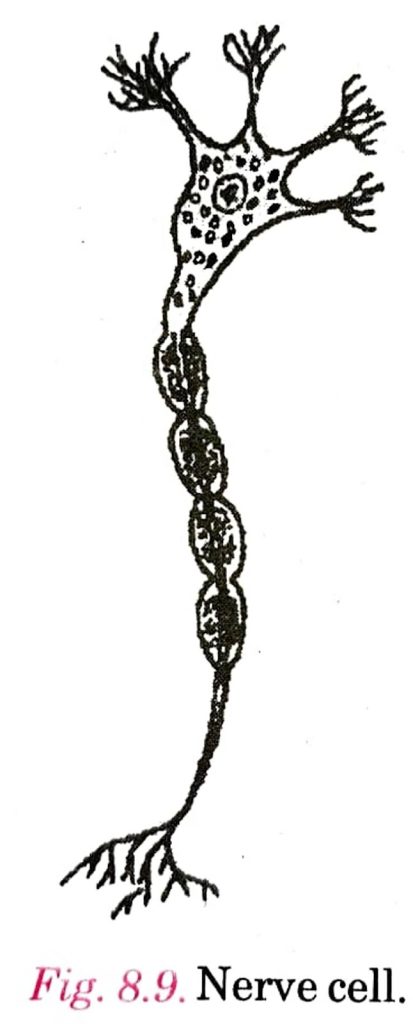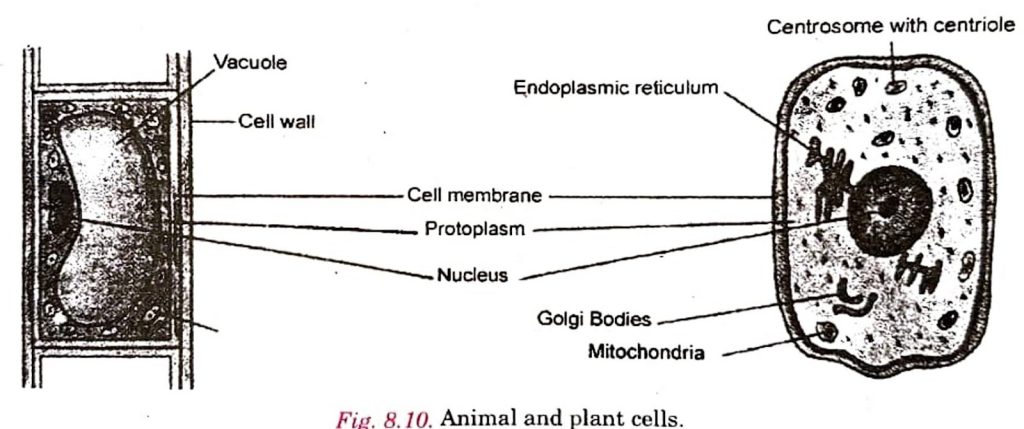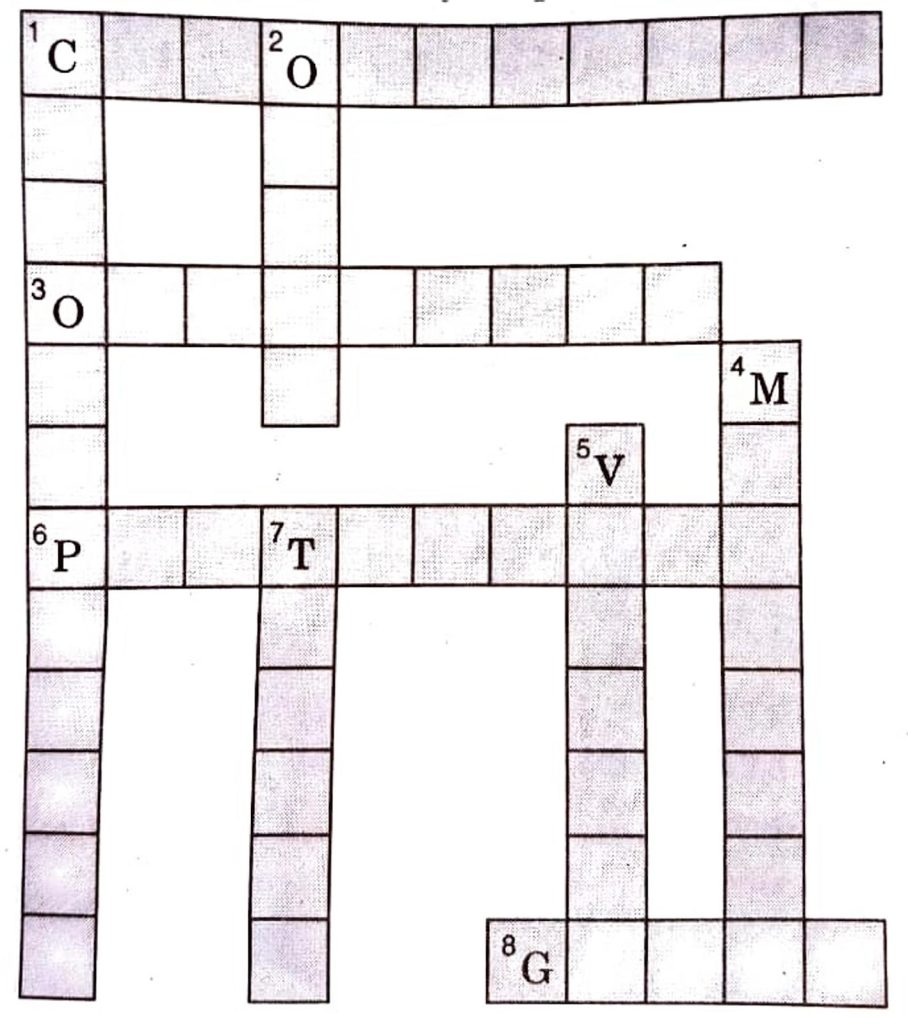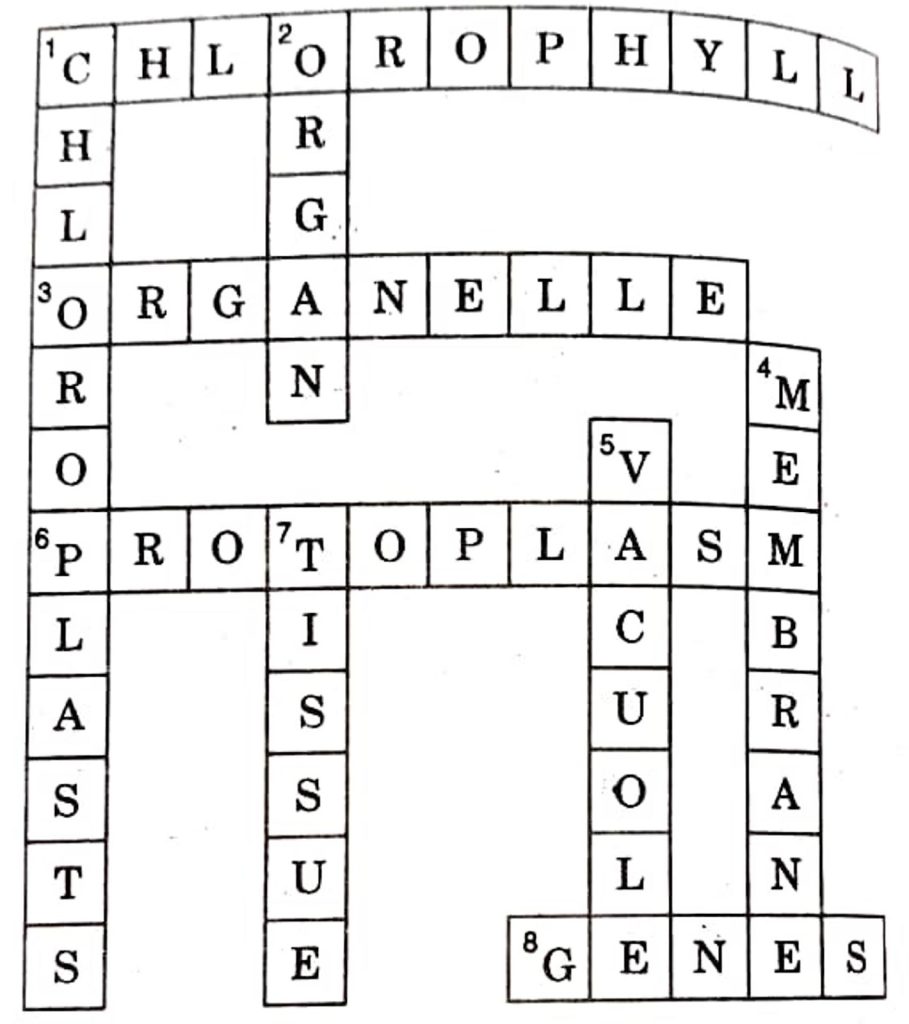NCERT Class 8 Science Chapter 8 Cell-Structures and Functions Solutions to each chapter is provided in the list so that you can easily browse through different chapters NCERT Class 8 Science Chapter 8 Cell-Structures and Functions and select need one. NCERT Class 8 Science Chapter 8 Cell-Structures and Functions Question Answers Download PDF. NCERT Class 8 Science Solutions.
NCERT Class 8 Science Chapter 8 Cell-Structures and Functions
Also, you can read the NCERT book online in these sections Solutions by Expert Teachers as per Central Board of Secondary Education (CBSE) Book guidelines. CBSE Class 8 Science Solutions are part of All Subject Solutions. Here we have given NCERT Class 8 Science Chapter 8 Cell-Structures and Functions and Textbook for All Chapters, You can practice these here.
Cell-Structures and Functions
Chapter: 8
NCERT TEXT BOOK EXERCISES
Q. 1. Indicate whether the following statements are True (T) or False (F).
(a) Unicellular organisms have one-called body. (T/F)
Ans. True.
(b) Muscle cells are branched (T/F)
Ans. True.
(c) The basic living unit of an organism is an organ. (T/F)
Ans. False.
(d) Amoeba has irregular shape. (T/F)
Ans. True.
Q. 2. Make a sketch of the human nerve cell. What function do nerve cell perform?
Ans. Functions:
(i) Nerve cells help in the transfer of messages from various body parts to brain and brain to various parts of the body.

(ii) They help also in the coordination of the functions of the organs of the body.
Q. 3. Write short notes on the following:
(a) Cytoplasm.
Ans. Cytoplasm: Cytoplasm is a thick jelly-like fluid inside the cell membrane. All the life functions take place in the cytoplasm. There are many small cytoplasmic bodies in cytoplasm. These are called cell organelles. All organelles in cytoplasm play an active role in the functioning of the cell.
(b) Nucleus of a cell.
Ans. Nucleus of a Cell: Nucleus is a large, spherical organelle presents in all the cells. Nucleus controls all the activities of cell. It is surrounded by a thin membrane called nuclear membrane. In animal cells, the nucleus is present at the centre of the cell. However, in the case of plant cells, it is present at the periphery of the cells. The nucleus consists of a nuclear membrane, nucleoplasm, nucleolus and chromosomes.
Q. 4. Which part of the cell contains organelles?
Ans. Cytoplasm.
Q. 5. Make sketches of animal and plant cell. State three differences between them.
Ans.

Differences:
| Animal Cell | Plant Cell |
| (i) Cell wall absent | Cell wall present. |
| (ii) Chloroplasts are absent | Chloroplast is present. |
| (iii) Centrosome presents near the nucleus | It has no centrosome. |
Q. 6. State the differences between eukaryotes and prokaryotes.
Ans.
| Prokaryotic Cell | Eukaryotic cell |
| 1. Size: generally small (1-10) μm) 1 μm = 10-6 m. | 1. Size: generally large (5-100 μm) |
| 2. Nuclear region: poorly defined due to absence of nuclear membrane and known as nucleoid. | 2. Nuclear region: well defined and surrounded by a nuclear membrane. |
Q. 7. Where the chromosomes found in a cell? State their function.
Ans. Chromosomes are situated in nucleus of a cell.
They carry characteristics of parent cells to the daughter cells.
Q. 8. ‘Cells are the basic structural units of living organisms.’ Explain.
Ans. Cells are the basic structural units of living organisms because a lot of cells unit to form and many tissues form an organ. And organs combine to form a complete body, so the cell is the basic structural unit of an organism. All basic functions for the survival of an organism take place inside cells so they are the basic functional units of a living being.
Q. 9. Explain why chloroplasts are found only in plant cells?
Ans. Chloroplasts are only found in plant cells because they are required for the food making process of plants called photosynthesis.
Q. 10. Complete the following crossword with the help of clues given below:
Across:
1. This is necessary for photosynthesis.

3. Term for component present in the cytoplasm.
6. The living substance in the cell.
8. Unit of inheritance present on the chromosomes.
Down:
1. Green plastids.
2. Formed by collection of tissues.
4. It separates the contents of the cell from the surrounding medium.
5. Empty space in the cytoplasm.
7. A group of cells.
Ans.


Hi! my Name is Parimal Roy. I have completed my Bachelor’s degree in Philosophy (B.A.) from Silapathar General College. Currently, I am working as an HR Manager at Dev Library. It is a website that provides study materials for students from Class 3 to 12, including SCERT and NCERT notes. It also offers resources for BA, B.Com, B.Sc, and Computer Science, along with postgraduate notes. Besides study materials, the website has novels, eBooks, health and finance articles, biographies, quotes, and more.



